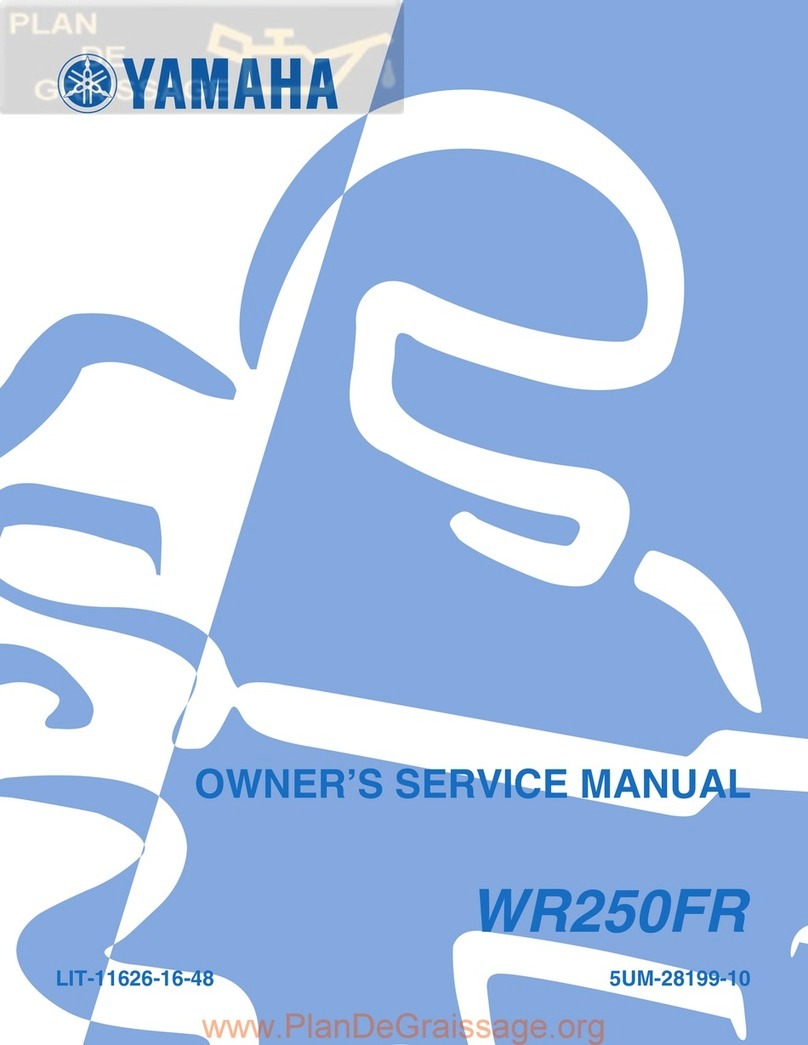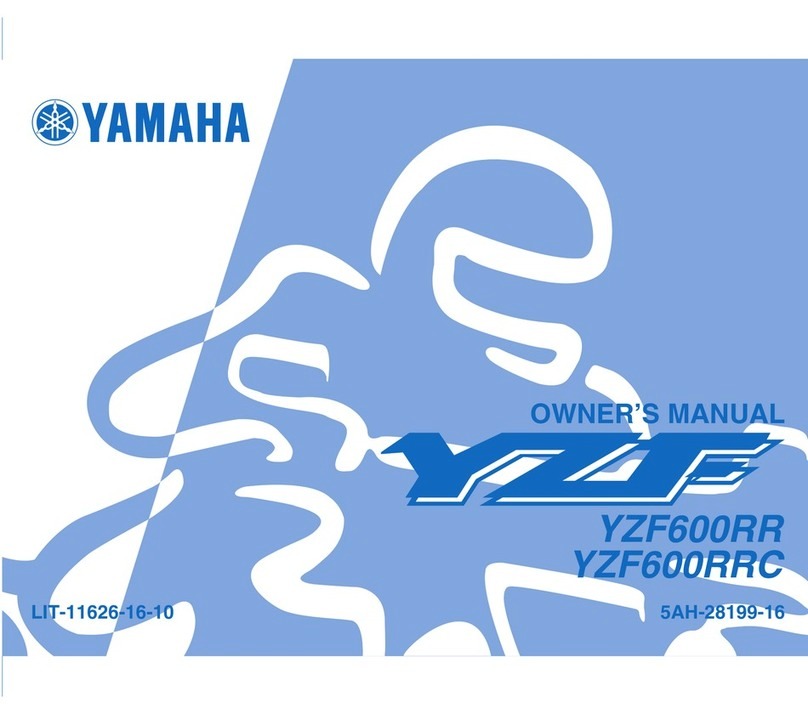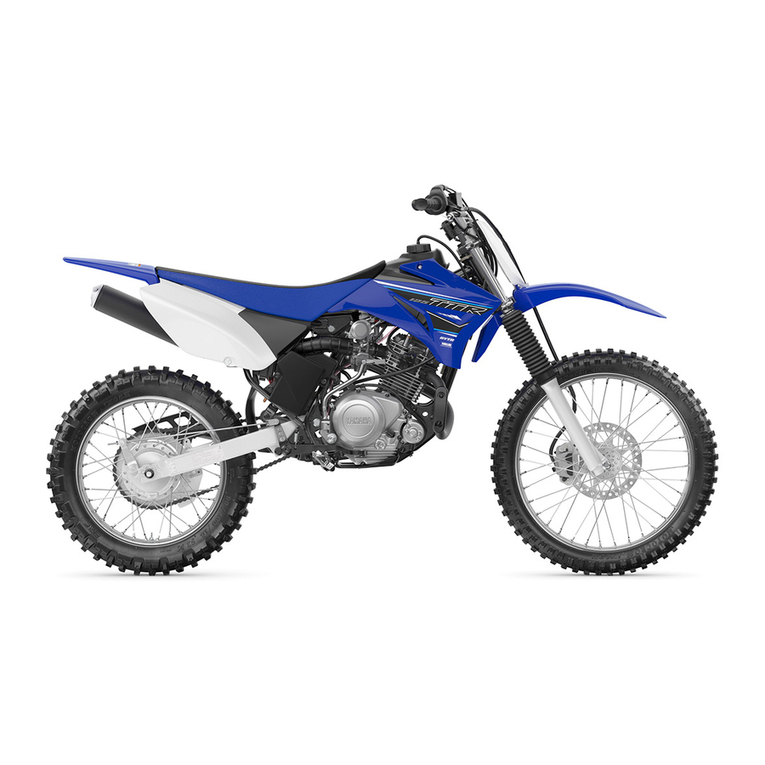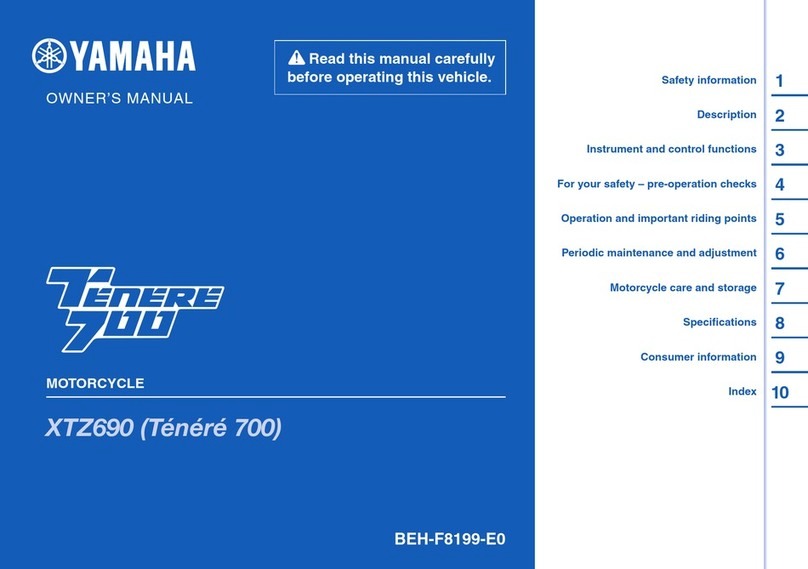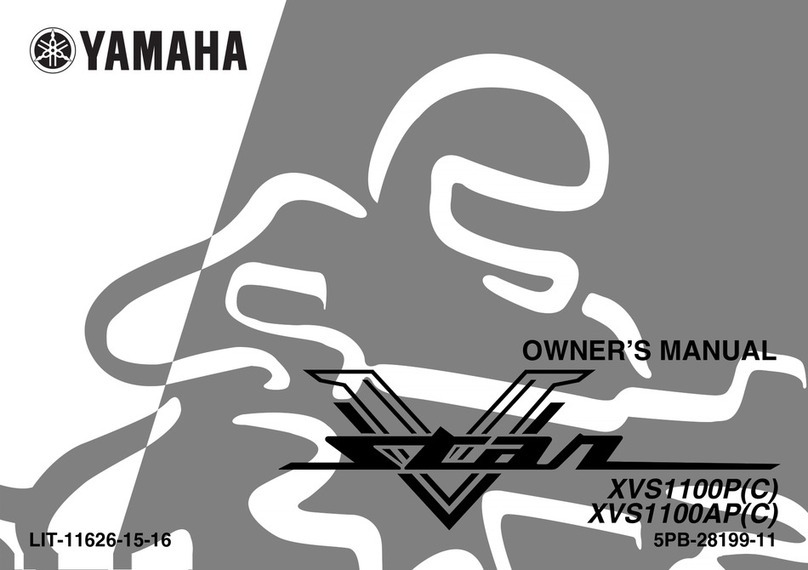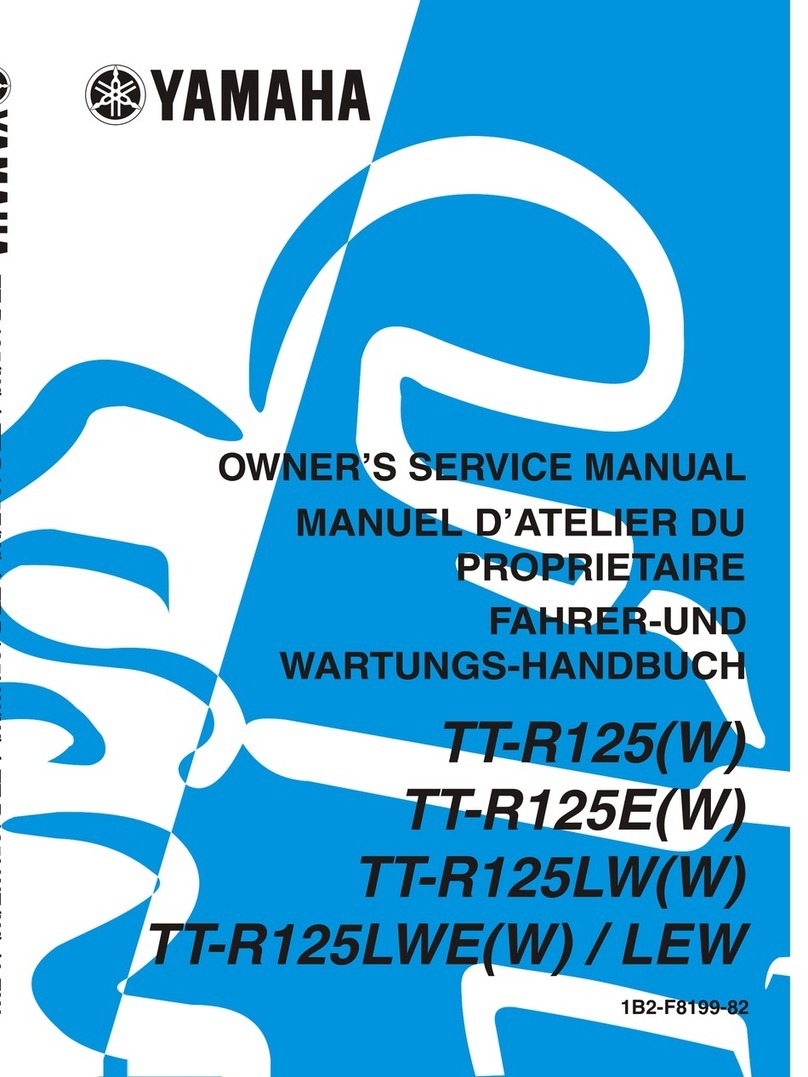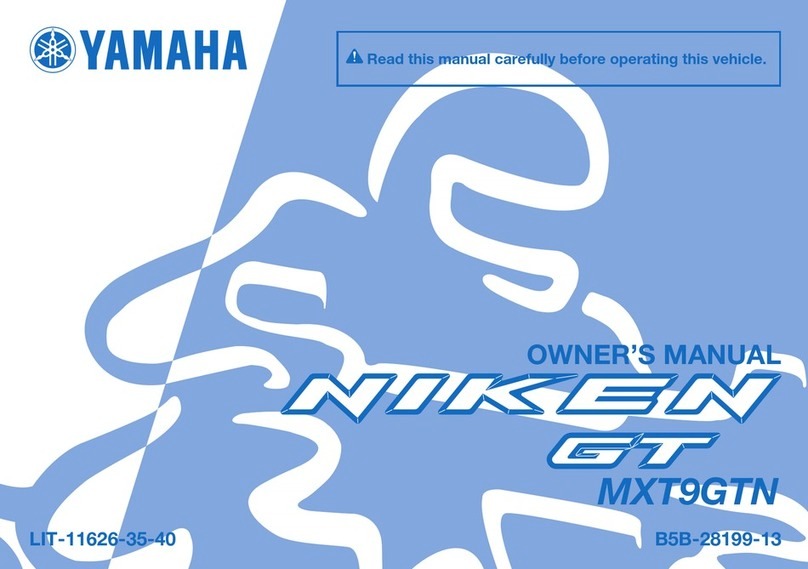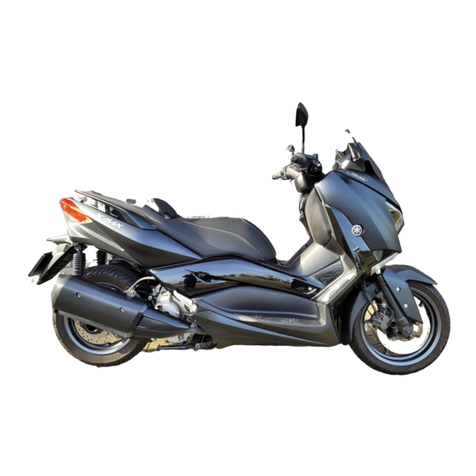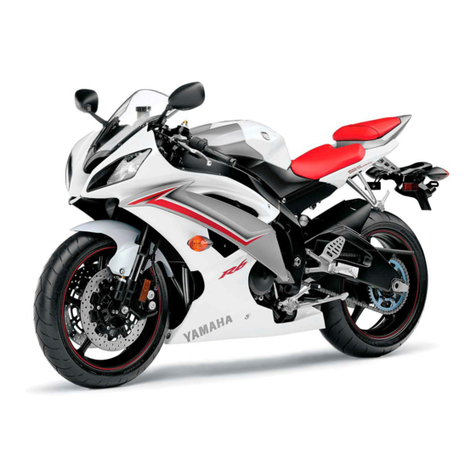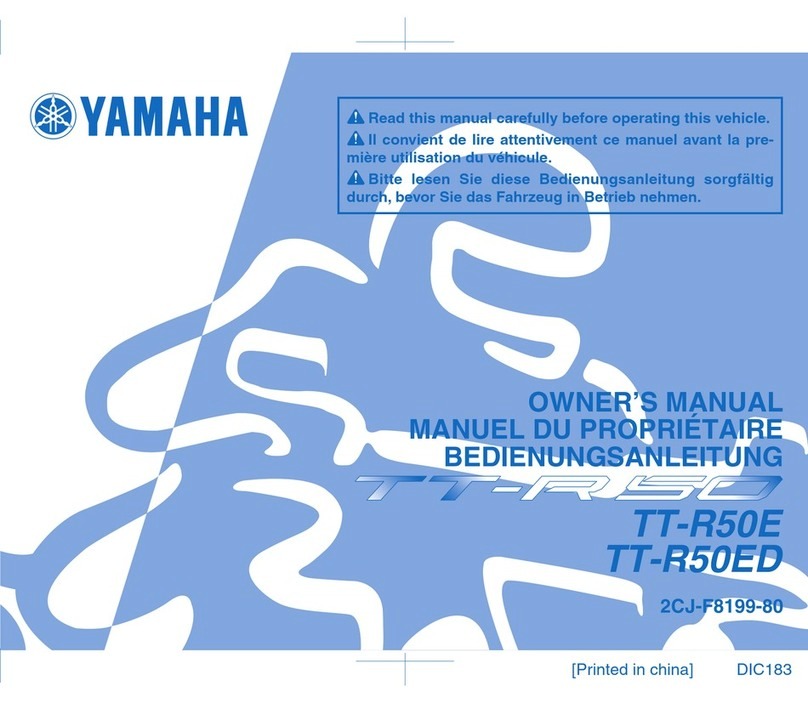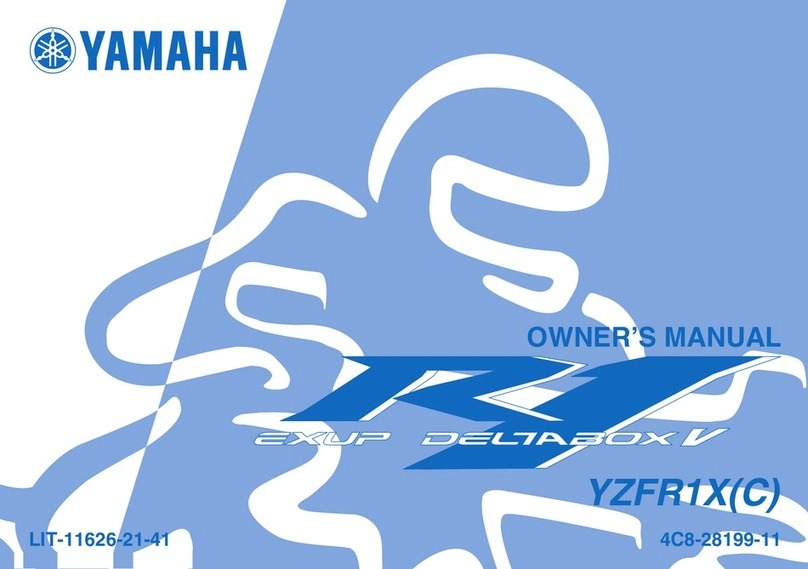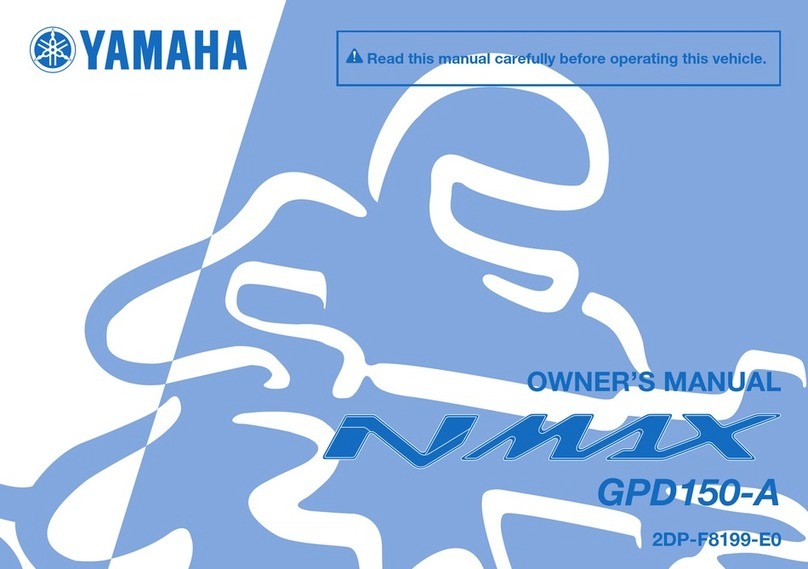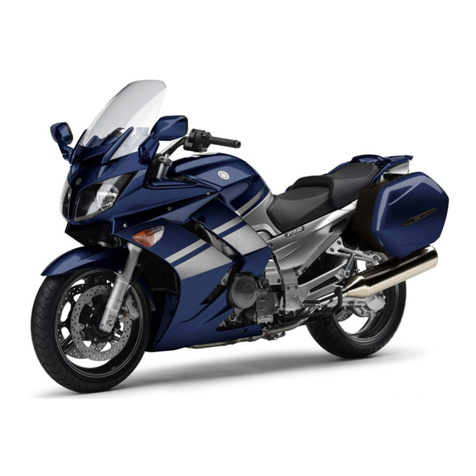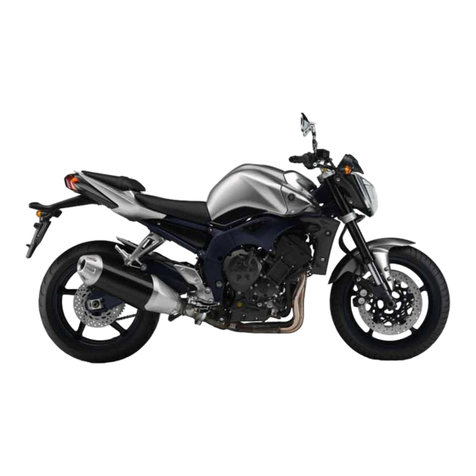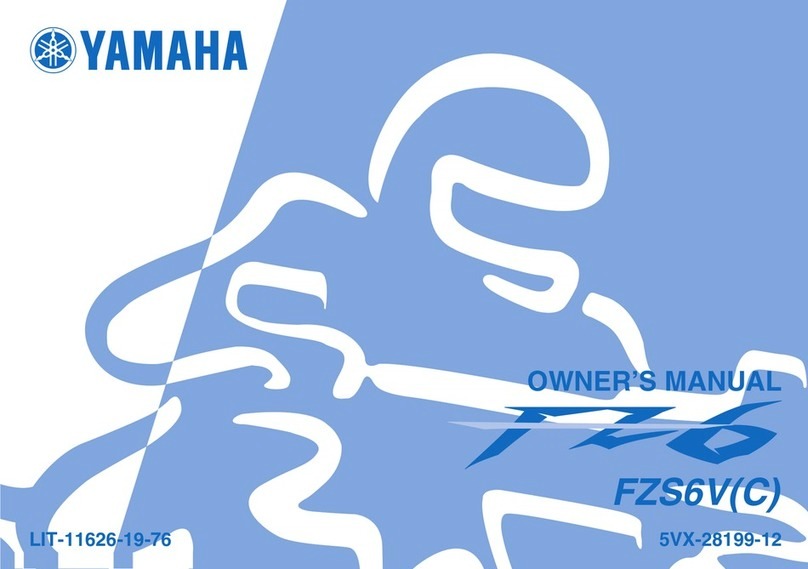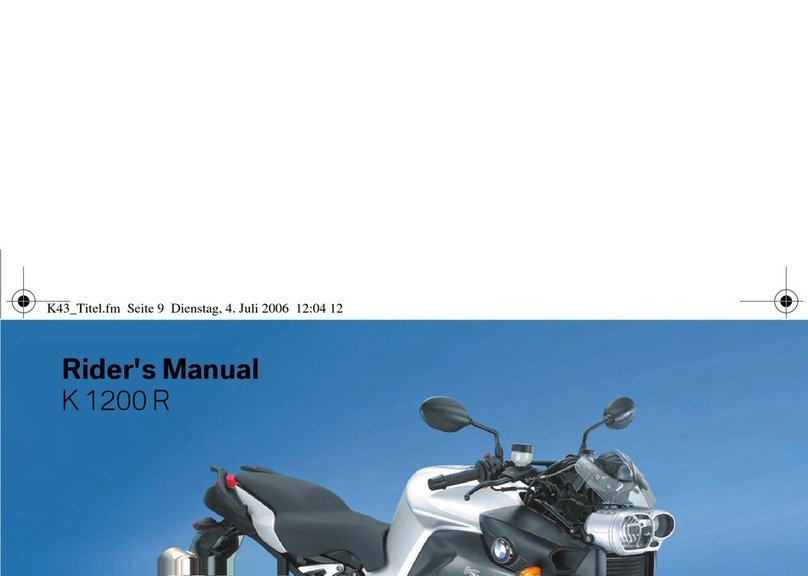
CONCERNING CRATE DAMAGE:
WARNING
CAUTION:
EAA00002
FOREWORD
This Assembly Manual contains the information required for the correct assembly of this Yamaha vehicle
prior to delivery to the customer. Since some external parts of the vehicle have been removed at the Ya-
maha factory for the convenience of packing, assembly by the Yamaha dealer is required. It should be
noted that the assembled vehicle should be thoroughly cleaned, inspected, and adjusted prior to delivery
to the customer.
EAA00005
NOTICE
The service specifications given in this assembly manual are based on the model as manufactured.
Yamaha Motor Company, Ltd. is continually striving to improve all of its models. Modifications and signifi-
cant changes in specifications or procedures will be forwarded to all authorized Yamaha dealers and will
appear in future editions of this manual where applicable.
The procedures below are described in the order that the procedures are carried out correctly and com-
pletely. Failure to do so can result in poor performance and possible harm to the vehicle and/or rider.
Follow the instructions in the Dealer Warranty Handbook, Procedure Section.
Particularly important information is distinguished in this manual by the following notations.
The Safety Alert Symbol means ATTENTION! BECOME ALERT! YOUR SAFETY
IS INVOLVED!
Failure to follow WARNING instructions could result in severe injury or death to the
vehicle operator, a bystander, or a person checking or repairing the vehicle.
A CAUTION indicates special precautions that must be taken to avoid damage to
the vehicle.
NOTE: A NOTE provides key information to make procedures easier or clearer.
EAA00001
YZF-R1SV/YZF-R1SVC
ASSEMBLY MANUAL
E2005 by Yamaha Motor Corporation,
U.S.A. First Edition, October 2005
All rights reserved.
Any reproduction or unauthorized use
without the written permission of
Yamaha Motor Corporation, U.S.A.
is expressly prohibited.
Printed in U.S.A.
P/N LIT-11666-19-75
